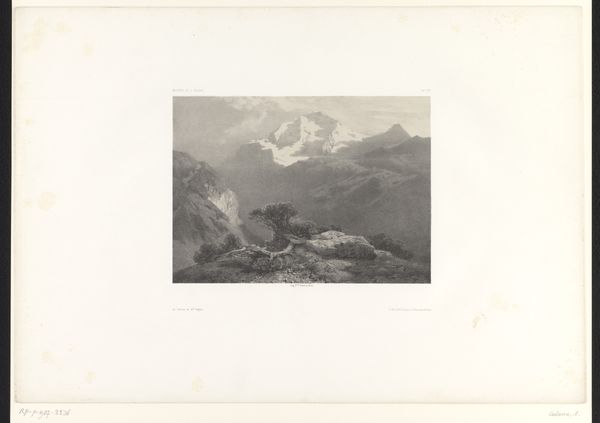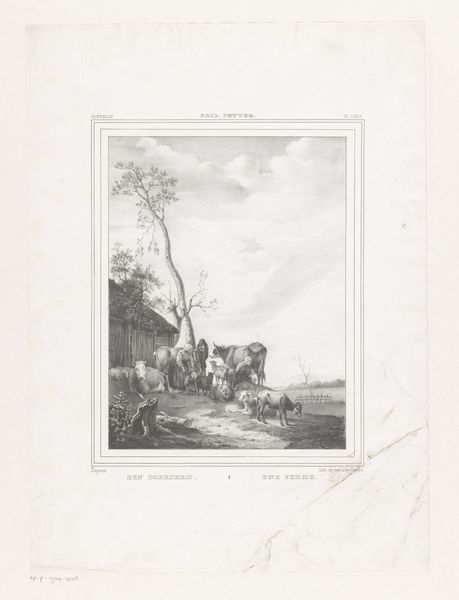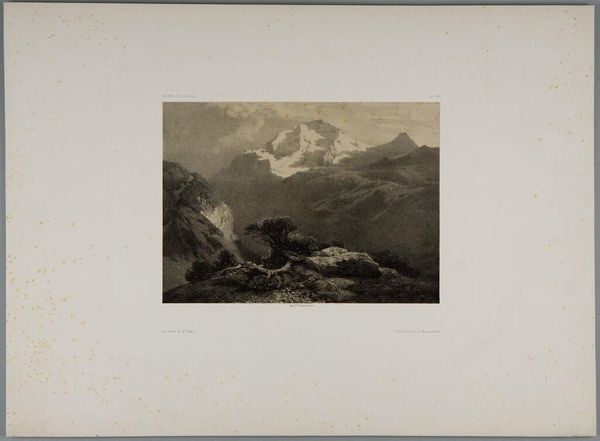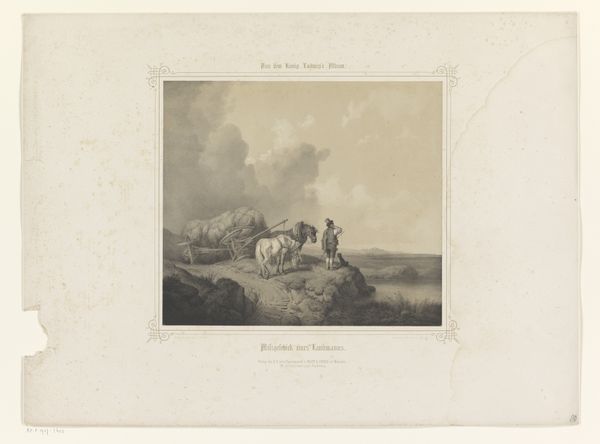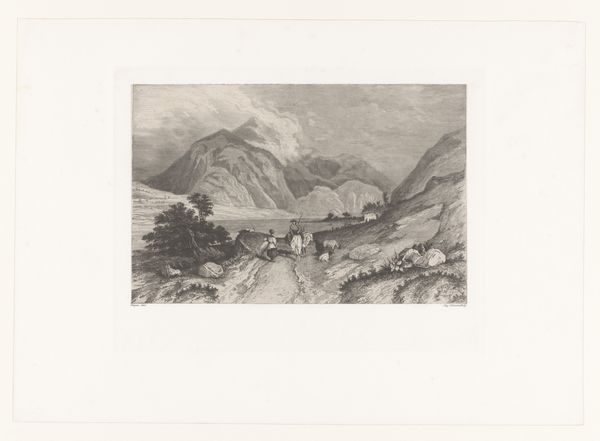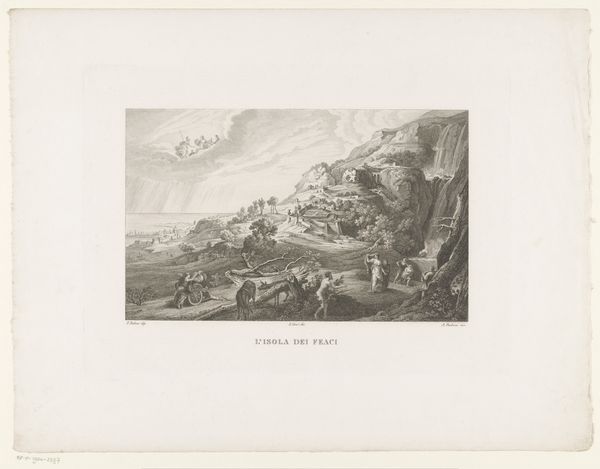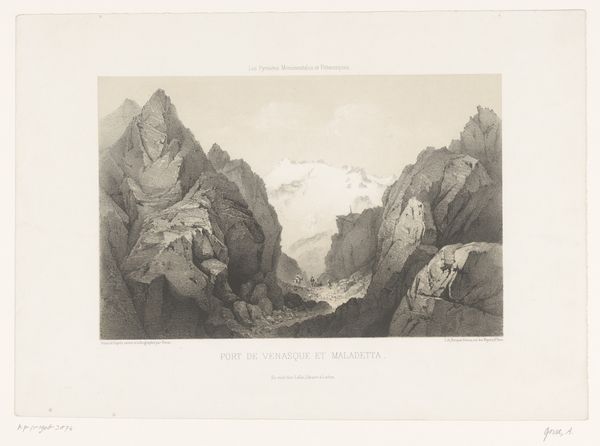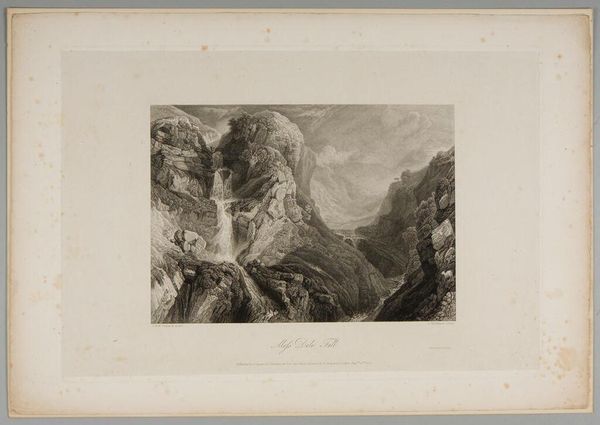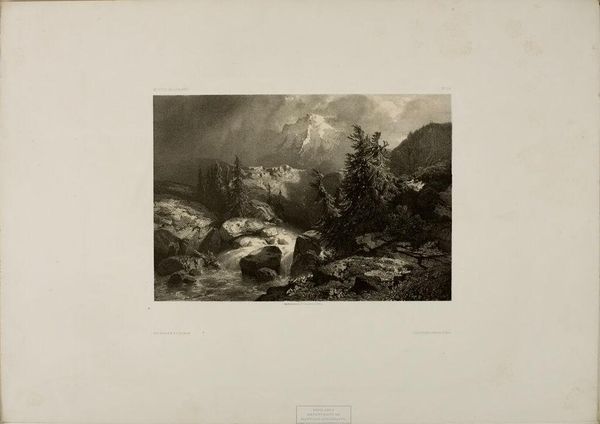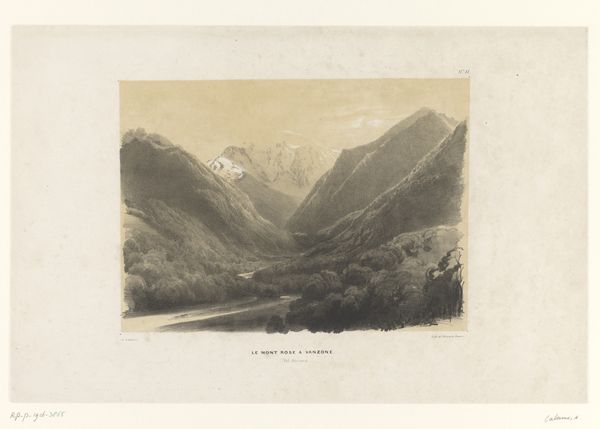
print, etching
# print
#
etching
#
landscape
#
waterfall
#
figuration
#
romanticism
#
line
Dimensions: height 380 mm, width 540 mm
Copyright: Rijks Museum: Open Domain
Curator: Let's explore "Watervallen bij Tivoli," an 1833 etching by Gijsbertus Craeyvanger, held here at the Rijksmuseum. Editor: It’s a striking piece. The monochromatic tones give it an almost dreamlike quality. The stark contrasts highlight the rough texture of the landscape against the softness of the cascading water. Curator: The artist’s selection of Tivoli as subject matter situates it within a broader 19th-century trend where landscape became intrinsically linked to ideas of nationhood, travel and colonial power. Consider, for instance, the history of this town, northeast of Rome, that, for centuries, was regarded as a kind of spectacle for European travelers who could project their cultural expectations and biases onto its topography and populations. Editor: From a structural point of view, there is an undeniable sense of movement generated by the diagonal composition: starting from the upper right, it brings the eye straight to the lower left, with all of its dramatic effect. Note also how the white of the paper peeks through at key junctures to heighten that luminosity and direct the gaze. Curator: That sense of dynamism is really reinforced by the way the local workers are portrayed navigating the rough landscape with their ox, right? In that way, Craeyvanger depicts not only the land itself, but a fraught and changing relationship between human beings, labor, and place. How these themes are portrayed and how their relationship with global narratives about work are visualized becomes extremely powerful. Editor: Right. Also, the building that you see above the highest part of the waterfall lends a fascinating, if also enigmatic touch, no? One could interpret that architectural element as an assertion of permanence against the backdrop of flowing water—or the exact opposite, given its dilapidated appearance. Curator: Agreed, it's not a simple message about one place. Editor: On second look, I notice new formal connections that enrich this visual dialogue; thanks to your broader insights on Tivoli. Curator: The longer we look, the more the social dynamics embedded in these scenic images emerge. It seems we’re both seeing this work anew.
Comments
No comments
Be the first to comment and join the conversation on the ultimate creative platform.

